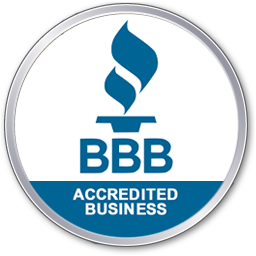Are you buying or selling property and worried about environmental risks? Then you need to know about the ASTM E1527-21 Standard. This Standard is a critical component of the Phase I Environmental Site Assessment (ESA) process.
It helps identify potential environmental risks on properties, whether they’re commercial, industrial, or residential. It’s essential for property owners, investors, lenders, and other stakeholders to understand the Standard and its updates to reduce potential risks and ensure compliance with federal and state environmental regulations.
In this post, we’ll give you an overview of the updated ASTM E1527-21 Standard, including its key updates, benefits, and implications. Keep reading to learn more.
Key updates to the ASTM E1527-21 Standard
In November 2021, ASTM released the E1527-21 Standard Practice, a new tool for environmental professionals to use in performing Phase I Environmental Site Assessments for real property.
However, in March 2022, the EPA released a Direct Final Rule that confused the environmental community. This rule did not eliminate the previous E1527-13 Standard, allowing environmental consultants to use either Standard to comply with All Appropriate Inquiries (AAI) rules. As a result, the EPA received unfavorable comments, leading to its withdrawal.
The EPA plans to adopt the E1527-21 Standard in a Final Rule, eliminating the use of the previous Standard, effective February 13, 2023, with a one-year transition period.
After February 13, 2024, only the E1527-21 Standard will meet the AAI Rule for liability protection for contamination under the Comprehensive Environmental Response, Compensation & Liability (CERCLA) Act.
The updated Standard introduces several significant changes, including new definitions, updated requirements, and changes to the format, to enhance the accuracy and reliability of Phase I ESAs.
These changes align the Standard with current environmental regulations and best practices, leading to more accurate and reliable assessments and reducing potential environmental liabilities and risks.
Updated Definition and Terminology
The E1527-21 Standard Practice introduces updates that include important changes to how environmental consultants identify hazardous substances or petroleum products on a property.
The previous Standard had a confusing definition of Recognized Environmental Condition (REC), but the new Standard has a more precise definition that includes three conditions.
The previous Standard had consultants identify a Phase I ESA REC when there was the presence or likely presence of any hazardous substances or petroleum products in, on, or at a property:
- Due to any release into the environment
- Under conditions indicative of a release to the environment
- Under conditions that pose a material threat of future release into the environment
The new definition specifies three conditions:
- Hazardous substances or petroleum products present due to being released into the environment
- The likely presence of these substances or products due to a likely release into the environment
- The presence of hazardous substances or petroleum products on a property that may result in a future release into the environment, potentially causing harm to human health and the surrounding ecosystem
The new Standard also includes Appendix X4 to help professionals better understand each condition. Additionally, environmental consultants are now encouraged to use the term subject property consistently throughout the report, which will help avoid confusion.
Finally, the new Standard also introduces a new term called significant data gap. This term refers to missing data that prevents environmental consultants from identifying a REC.
An example of a significant data gap is an inaccessible building during the site recon phase. These updates to the Standard are intended to make Phase I Environmental Site Assessments more accurate and reliable.
Validity Period of E1527-21 Phase I Reports
The new E1527-21 Standard sets rules for how long a Phase I Environmental Site Assessment report is valid. The report must be completed no more than 180 before the property is acquired to comply with the updated Standard.
Alternatively, if the following components were updated, the report could remain valid for up to one year:
- Interviews
- Government record reviews
- Recorded environmental cleanup lien searches
- Subject property recon
- Environmental Professional Declaration
The time period begins when the first component is complete, and the report must indicate the dates of when each component was completed. Additionally, professionals must remember that interviews are now classified and included as a historical source of information.
These updated guidelines help to reduce mistakes and ensure that the report reflects the most up-to-date information.
Historical Sources
The new Standard sets specific rules for using Standard Historical Sources in Phase I ESAs. These sources are irreplaceable in identifying hazardous substances on the subject property and adjoining properties.
Environmental professionals are now required to review the following four historical sources:
- City directories
- Aerial photographs
- Fire insurance maps
- Topographic maps
The report must contain an explanation if any of the minimum sources cannot be accessed.
Please note: these are the absolute minimum that must be reviewed. Additional Standard Historical Sources may be subject to review as needed to identify RECs.
The updated Standard also emphasizes the importance of providing as much detailed information in the report about the subject property use. It also introduces the concept of a Historical Recognized Environmental Condition (HREC).
These are hazardous substances or petroleum products that were previously released and addressed to the satisfaction of the regulatory authority. This means it meets the unrestricted use criteria and is not subject to any controls or limitations.
The environmental professional must evaluate any past closure of a contaminated site and ensure that the assessment data associated with the closure meets current standards. Failure to do so could result in not identifying an HREC when in fact, one exists.
Controlled Recognized Environmental Condition (CREC)
The new Standard Practice introduces another type of condition that can affect a subject property called a Controlled Recognized Environmental Condition (CREC).
A CREC is a hazardous substance or petroleum product that regulatory authorities have addressed to their satisfaction and is allowed to remain in place with certain limitations and controls in effect.
This type of condition is different from a REC and an HREC. To help professionals identify and differentiate between these three conditions, the new Standard includes a flow chart in Appendix X4. This flow chart aims to eliminate confusion and guide environmental professionals conducting Phase I ESAs.
Media Inclusion Requirement
Adding maps and photos to a Phase I ESA Report may seem like a no-brainer. But, in the past, the Standard didn’t require professionals to include them.
However, the new Standard changes that. It explicitly requires:
- Maps outlining the subject property boundaries
- Photos of the major site features and locations considered to be RECs or meet the de minimis conditions
Benefits of the New ASTM E1527-21 Standard
The new ASTM E1527-21 Standard has many benefits for environmental professionals and those involved in real estate. Some of these benefits include:
- Increased clarity
- Improved data quality
- Compliance with the most up-to-date regulations
The updated REC definition reduces confusion, and the term significant data gap helps identify areas where data is missing. The flow chart and media inclusion requirement provides consistency and eliminates confusion among stakeholders.
The Standard also introduces Historical Recognized Environmental Conditions (HREC) and provides guidance for evaluating past closure of contaminated sites to ensure the assessment meets current standards for unrestricted use.
Implications of the New ASTM E1527-21 Standard
The new Standard may include several implications, such as:
- Increased costs
- Transitional period confusion
- Limited information access
There may be increased costs due to more time and resources to meet the new requirements. This includes reviewing a minimum of four historical sources and including media in the report.
Additionally, some information may be challenging to acquire, and the transition period may cause confusion and potential errors as consultants switch between the old and new Standards.
Final Thoughts
The updated ASTM E1527-21 brings significant changes that impact both environmental professionals and real estate stakeholders. The revised Standard aims to improve the reliability and accuracy of Phase I ESAs. It also aims to align it with current regulations and industry best practices.
Although the updated Standard offers benefits such as increased clarity and better alignment with current regulations, there are also potential negative implications such as increased costs and more stringent requirements. Understanding the updated Standard and its impact is essential to conduct due diligence accurately and thoroughly, reduce potential risks, and ensure compliance with federal and state environmental regulations.
Get in touch with our industry professionals today whether you need a Phase I ESA or just want to speak with someone regarding your property in Portland.




